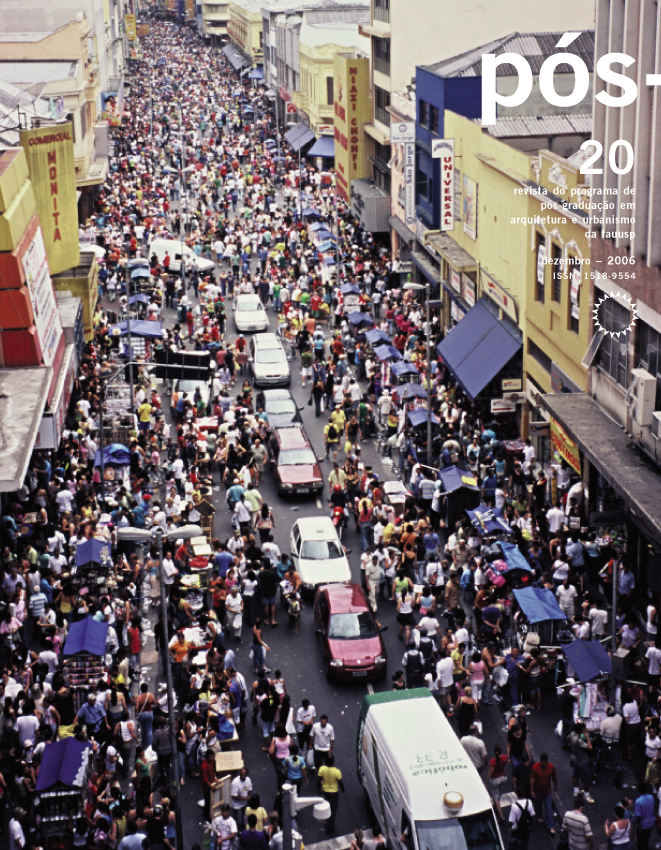From the garden condominium to the park condominium: typological variations in São Paulo's landscape
DOI:
https://doi.org/10.11606/issn.2317-2762.v0i20p106-121Keywords:
High-and medium-standard condominiums, open spaces, typology, São Paulo, landscape architecture, urban landscapeAbstract
Many types of buildings and many types of open spaces make up the urban landscape and the urban fabric of the city of São Paulo in the early 21st century. One of several forms of housing is the high-and medium-standard condominium. Some of these have a simple morphological structure, with buildings parallel to the front property line, gardens in the front yard, and a playground in the backyard. Others have a more complex morphological structure, with groups of trees, woods, private streets, and the original topography partially preserved. In fact, there is a gradation in the design of open spaces, which varies from the establishment of garden areas to that of private parks, with the square and the club in between. The former is characterized by its design and by the arrangement of buildings; the latter by leisure areas, swimming pools, and sports courts in the central area of the property. This gradation determines the typological variety of high-and medium-standard condominiums that are part of the urban landscape in São Paulo. In this case, it is possible to discuss the types of condominiums, emphasizing their similarities, differences, and hierarchies. This paper presents a typology of these condominiums, to study their open spaces. This typology, however, will not be limited to a formal analysis, since their main characteristics are associated with urban landscape and society.Downloads
References
ARGAN, Giulio Carlo. História da arte como história da cidade. 4. ed. São Paulo: Martins Fontes, 1998. 280 p.
BATALHA, Wilson de Souza Campos. Loteamentos e condomínios: Sistema jurídico da propriedade fracionada. São Paulo: Max Limonad, 1953. v.1 e 2.
CALDEIRA, Teresa. Cidade de muros. 2. ed. São Paulo: Edusp/Editora 34, 2003. 399 p.
FREYRE, Gilberto. Sobrados e mucambos. 14 ed. São Paulo: Global, 2003. 968 p.
FRÚGOLI, Jr. Heitor. Espaços públicos e interação social. São Paulo: Marco Zero, 1995. 111 p.
LEFEBVRE, Henri. O direito à cidade. São Paulo: Documentos, 1969. 133 p.
MARX, Murillo. Cidade brasileira. São Paulo: Edusp/Melhoramentos, 1980. 151 p.
SANTOS, Carlos Nelson Ferreira dos. Quando a rua vira casa: A apropriação de espaços de uso coletivo em um centro de bairro. São Paulo: Projeto, 1985. 152 p.
SPIRN, Anne Whiston. O jardim de granito. São Paulo: Edusp, 1995. 345 p.
Downloads
Published
Issue
Section
License

This work is licensed under a Creative Commons Attribution 4.0 International License.
DIADORIM - Diretório de Políticas Editoriais












